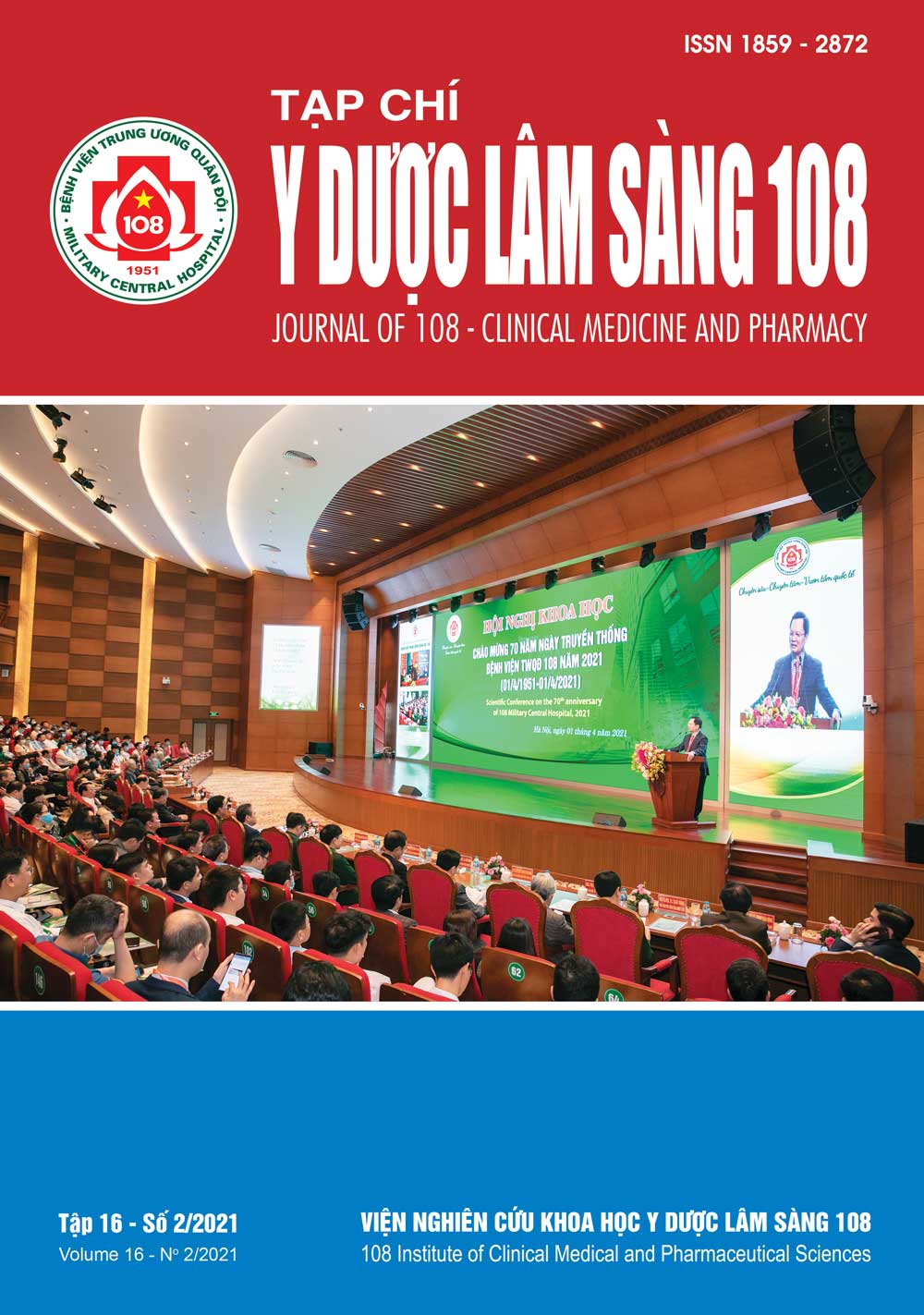The relationship between ARFI index, liver enzyme levels and etiologies in fatty liver patients
Main Article Content
Keywords
Abstract
Objective: To evaluate the relationship between liver tissue stiffness with liver enzyme levels and hepatitis etiologies in patients with fatty liver. Subject and method: A cross-sectional descriptive study was conducted at the Institue of Gastroenterology and Hepatology from January 2019 to August 2020 among patients who were ≥ 18 years old diagnosed with fatty liver on ultrasound, and measured shear wave velocity (SWV) on ARFI elastography. ARFI measurement was performed in segment V and VIII, final results were calculated as average values. Laboratory tests including liver enzymes, lipid profile were investigated. Result: 100 patients were eligible (78% males), the mean age was 46.19 ± 12.22 years. The severity of fatty liver with grade I, II and III were 65, 34, and 1 patient, respectively. The mean SWV was 1.26 ± 0.28m/s. SWV value was significantly higher in males and in segment VIII, but not different among fatty liver grades. SWV had a positive correlation with liver enzymes (AST, ALT, GGT), and cholesterol, triglyceride levels. The mean SWV was significantly different between levels of liver enzymes elevation, but similar among patients with different hepatitis etiologies. Conclusion: Liver tissue stiffness was different between levels of liver enzymes elevation, but similar among etiological groups of fatty liver.
Article Details
References
2. Trần Thị Khánh Tường, Hoàng Trọng Thảng (2015) Đánh giá xơ hóa gan bằng kỹ thuật ghi hình xung lực xạ âm và chỉ số tỷ lệ aspartate aminotransferase trên tiểu cầu trong bệnh gan mạn. Tạp chí Y Dược học, 25, tr. 58-70.
3. Trương Ngọc Thái, Nguyễn Vân Anh, Đào Việt Hằng (2019) Nghiên cứu đánh giá độ đàn hồi nhu mô gan ở người trưởng thành bằng kỹ thuật ARFI. Tạp chí Y học thực hành, 1106, tr. 100-102.
4. Boursier J, Isselin G, Fouchard-Hubert I et al (2010) Acousti radiation force impulse: A new ultrasonographic technology for the widespread noninvasive diagnosis of liver fibrosis. European Journal of Gastroenterology & Hepatology 22(9): 1074.
5. Huang J, Hsieh M, Dai C et al (2007) The incidence and risks of liver biopsy in non‐cirrhotic patients: An evaluation of 3806 biopsies. Gut 56(5): 736–737.
6. Rumack CM (1998) Diagnostic Ultrasound. In: Rumack CM, editor. St Louis: Mosby: 110-112.
7. Harris N, Nadebaum D, Christie M et al (2016) Acoustic radiation force impulse accuracy and the impact of hepatic steatosis on liver fibrosis staging. Journal of Medical Imaging and Radiation Oncology 60(5): 587-592.
8. Kim JE, Lee JY, Kim YJ et al (2010) Acoustic radiation force impulse elastography for chronic liver disease: comparison with ultrasoundbased scores of experienced radiologists, child-pugh scores and liver function tests. Ultrasound in Medicine and Biology 36(10): 1637-1643.
9. Lupsor M, Badea R, Stefanescu H (2009) Performance of a new elastographic method (ARFI technology) compared to unidimensional transient elastography in the noninvasive assessment of chronic hepatitis C. Preliminary results. J Gastrointestin Liver Dis 18(3): 303- 310.
10. Daniel SPratt (2016) Evaluation of liver function. HARRISON’S Gastroenterology and Hepatology19 ed: The McGraw-Hill Companies. 2016.
 ISSN: 1859 - 2872
ISSN: 1859 - 2872
